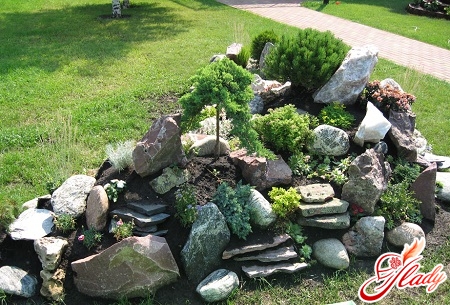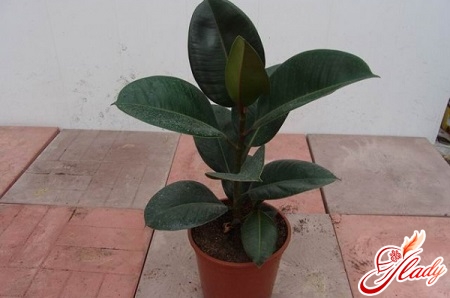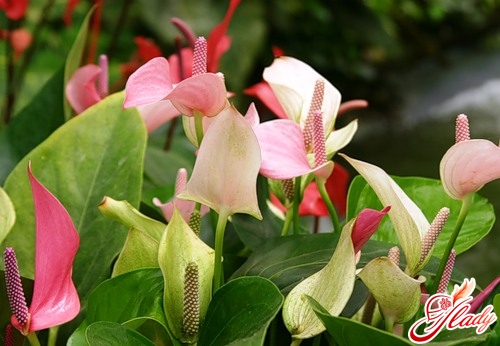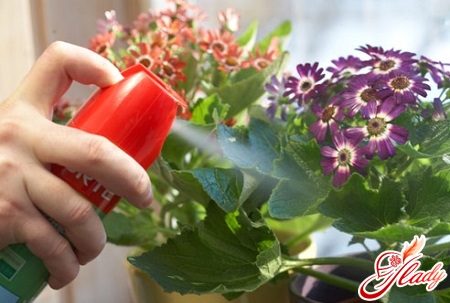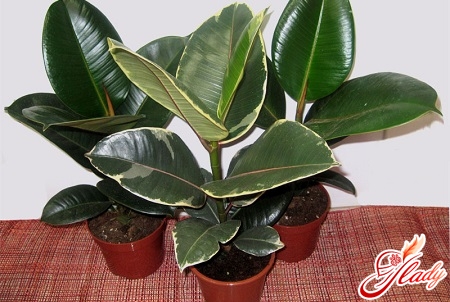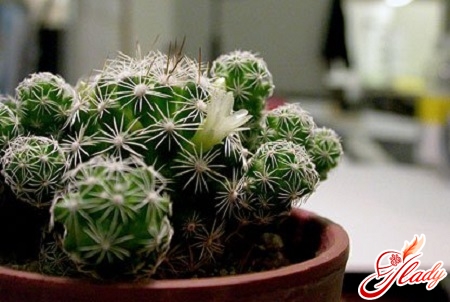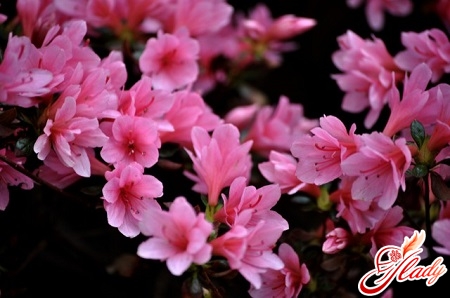 Visiting a flower shop in the winter, you will by all meanspay attention to the lush blossoming azalea bushes. You will be amazed by the variety of colors and the beautiful shape of the petals. Often there are so many colors that you can not see the leaves themselves. And the fact that the azalea bloom falls on the winter season will not leave you a chance to pass by. But inexperienced growers often happen that after a plentiful flowering all azalea is gradually dying, caring for which requires careful attention. What are the conditions it needs to ensure, how to properly care for her in the apartment? How to achieve an annual long flowering and what to do after it? Reproduction in which way for azalea will be most effective? We will try to answer these and other questions in this article. We will reveal the secret of the sunny joyful mood in winter, the essence of which lies in creating an atmosphere that is as close to the natural as possible. And this is diffused sunlight, coolness and clean air.
Visiting a flower shop in the winter, you will by all meanspay attention to the lush blossoming azalea bushes. You will be amazed by the variety of colors and the beautiful shape of the petals. Often there are so many colors that you can not see the leaves themselves. And the fact that the azalea bloom falls on the winter season will not leave you a chance to pass by. But inexperienced growers often happen that after a plentiful flowering all azalea is gradually dying, caring for which requires careful attention. What are the conditions it needs to ensure, how to properly care for her in the apartment? How to achieve an annual long flowering and what to do after it? Reproduction in which way for azalea will be most effective? We will try to answer these and other questions in this article. We will reveal the secret of the sunny joyful mood in winter, the essence of which lies in creating an atmosphere that is as close to the natural as possible. And this is diffused sunlight, coolness and clean air. 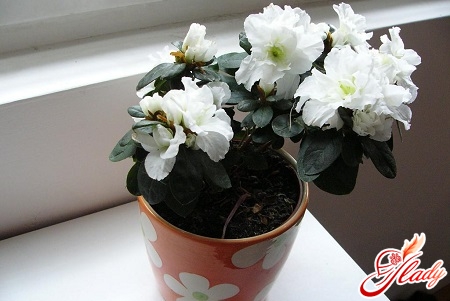
What should be the care of azalea
So, let us dwell in more detail on the mainaspects of plant care. Lighting Like all tropical plants, azaleas are not indifferent to the saturated light. But remember, direct sunlight will ruin your flower. There is a high probability of getting burns, the symptoms of which are the dry tips of the leaves and their darkening. The best option is to place the plant on the eastern and western windows. If there is no such possibility, then just do not place the flowers directly on the windowsills, but place them at some distance from the window - on the bedside tables, shelves and the like. In winter, during the flowering period, azalea is even more demanding for light. And to effectively flowering plants can not do without additional light. As an auxiliary lighting, use phyto-lamps or fluorescent (cold daylight) lamps. Air temperature Azalea is a plant that loves the coolness, and for a successful flower the acceptable temperature will be 13-20 degrees. However, this plant can gradually get used to a higher room temperature. There are specimens that feel great at 25-28 degrees. But nevertheless, for the successful tying of buds it is ideal to provide a maximum of 16 degrees of heat, and the minimum temperature of the content should not be less than five degrees. In winter it is best to put a pot of blooming azalea on a window sill without a heating battery and keep the aperture ajar. But watch that it does not freeze from a strong draft. Fortunately, in the hottest summer period the azalea is at rest, and it is not more difficult to take care of it at this time than at any other time. It can be safely buried in the garden in a cool shaded place. Pay attention: before placing the pot in the ground, close the drainage hole with a stocking so that the garden pests can not get into the ground. And all the same it is necessary to water the plant and moisten the air around the flower. In the spring after and in the autumn before the onset of frost, the flowers feel fine on the balcony or the loggia. Another important condition: to bring azalea in the autumn home should be before the start of the heating season. You need to do this gradually, stretching the procedure for a week and a half. A sudden change in temperature can lead to the fall of leaves. A big and common mistake of amateur flower growers is the cladding of the ground surface with ice for artificial cooling. This can lead to decay of the root system, and consequently, to the death of azaleas. In this case, further care for it will no longer make sense. Humidity The natural climate in which azaleas grows is highly humid, and therefore the necessary environment should be provided in the apartment. And if your goal is not just admiring the luxuriant flowers, but replicating rare specimens, then high humidity is simply a vital condition for azalea. As a rule, in the winter the humidity in the apartment is not more than 40%, and for the optimal content of this plant it is necessary to maintain 70-80% of humidity. The best option for creating coolness and humidity is the humidifier and air conditioner. In extreme cases, put the pot on a special tray filled with moistened claydite, and often spray the plant, avoiding moisture on the flowers. A flower pot should be chosen with a wide pallet, which can be filled with expanded clay or moss-sphagnum. And, of course, there must always be water in the pan. Sprinkle the azalea very carefully, without pouring buds and leaves. Accumulated moisture will lead to gradual decay of leaves and flowers. Nearby containers with water, decorative fountains, hanging wet towels are also good options for increasing humidity. And take care of the azalea from the harmful dry air emanating from the hot radiators. To do this, you can simply cover the battery with a thick veil. Watering One of the main conditions for keeping azaleas at home is proper watering. And the main rule when watering a plant is moderation. Take care that the soil does not dry out, but it would always be a little wet. Excess moisture is also fatal, as is insufficient watering. Water should be used soft, durable. You can also add a few drops of citric acid to the water once or twice a month. In winter, the frequency of watering can be twice a week, whereas in summer it is necessary to water every other day. It all depends on the conditions of detention. Be attentive to your plant, and soon you will understand when and how much you need to water the darling and how to properly care for her. 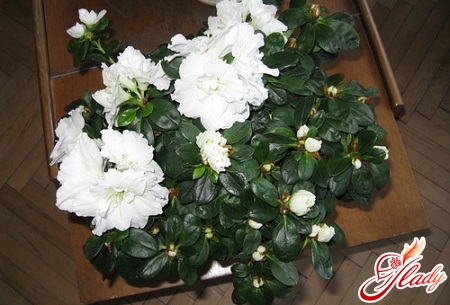 Pruning and prischipka An important condition forforming a beautiful lush bush and for tying more buds is a timely and systematic nipping of the plant. This procedure should be started after the entire flowering of the azalea and until the middle of July. And since the buds form at the ends of shoots, the main task is to grow as many new shoots as possible. Too elongated during flowering, the branches need to be cut off, and then cut the slice with a disinfecting solution. Try to form the crown of the azalea so that it is lush, with a lot of ramifications. Caring for her after flowering is much easier, because the flowers do not cover the leaves - it's time to prevent diseases and defeat pests. Transplant azaleas Do not transplant azaleas in the winter. It is best to postpone this procedure until new shoots grow. But there are cases when an emergency transplant is required: decaying embedded roots, an excessively small pot - in which case the transplantation will bring a clear benefit. Young flowers after the flowering and trimming shoots are transplanted annually, but the transplantation of a more mature azalea should not be made more often than every two to three years. The pot is selected 1-2 cm larger than the previous one, and since the root system of azalea is surface-horizontal, you should choose a container that is flat and wide in diameter. If you are afraid of damaging the root lump, then simply transplant the plant by transshipment. Otherwise, there are options for neat trimming of a too voluminous coma, cleansing the roots of the adhered old soil and completely replacing the substrate. Soil and fertilizer For the successful maintenance of azalea it is required to pick up the right soil. At first, it's better not to experiment, but to buy a ready-made substrate, prepared specifically for azaleas, in a garden store. More experienced flower growers can prepare the necessary soil themselves. This will require coniferous land, sand and peat. Do not forget about the need for a drainage layer of expanded clay. Like all plants, azalea needs additional fertilizing with fertilizers. And for this we also recommend buying a fertilizer, also designed specifically for azaleas. By the way, for azaleas, there is a general principle of fertilizing: after full flowering and falling buds (usually already closer to summer) fertilizer should contain more nitrogen. But closer to the autumn, when buds begin to be tied, there must be more potassium and phosphorus. Reproduction Reproduction by cuttings is the best way. To do this, cut the cuttings at the age of no more than six months and not stiffened. Place them in the usual azalea soil and cover with packages. With regular watering, the flowers take root within 1.5-2 months, after which they must be transplanted into separate pots. Please note that for the rooting of the cuttings the ambient temperature should be not lower than + 22 ° С and relative humidity not less than 80%. Diseases and pests Of course, like any other flower, azalea is susceptible to various diseases and pest damage. A common and most dangerous threat is represented by mites of all kinds. Intrusive, rapidly multiplying small insects can instantly envelop the entire flower; to struggle with them is extremely difficult. This pest calmly moves to pots with other colors. Dry air, heat, summer - all these are favorable conditions for the appearance of other pests, such as mealy moth, scab, aphid. Of course, the best thing in the fight against pests is prevention. Daily inspection of leaves and flowers, weekly treatment of leaves with special solutions or simply soapy water, the use of insecticides for prevention - all this will help you to maintain a healthy plant and prevent undesirable consequences of an attack on it pests. Of the diseases most azalea is affected by gray rot, spotting, fusarial wilting. In order to exclude infection with fungi, the flower must be treated with a 1% Bordeaux liquid. Competent care for azalea, optimal conditions of keeping and care of it before and after flowering, preventive maintenance of diseases, timely reproduction - all this will protect your flower reliably and permanently, and it will give you an amazing bloom, a healthy appearance and pleasure from the result obtained.
Pruning and prischipka An important condition forforming a beautiful lush bush and for tying more buds is a timely and systematic nipping of the plant. This procedure should be started after the entire flowering of the azalea and until the middle of July. And since the buds form at the ends of shoots, the main task is to grow as many new shoots as possible. Too elongated during flowering, the branches need to be cut off, and then cut the slice with a disinfecting solution. Try to form the crown of the azalea so that it is lush, with a lot of ramifications. Caring for her after flowering is much easier, because the flowers do not cover the leaves - it's time to prevent diseases and defeat pests. Transplant azaleas Do not transplant azaleas in the winter. It is best to postpone this procedure until new shoots grow. But there are cases when an emergency transplant is required: decaying embedded roots, an excessively small pot - in which case the transplantation will bring a clear benefit. Young flowers after the flowering and trimming shoots are transplanted annually, but the transplantation of a more mature azalea should not be made more often than every two to three years. The pot is selected 1-2 cm larger than the previous one, and since the root system of azalea is surface-horizontal, you should choose a container that is flat and wide in diameter. If you are afraid of damaging the root lump, then simply transplant the plant by transshipment. Otherwise, there are options for neat trimming of a too voluminous coma, cleansing the roots of the adhered old soil and completely replacing the substrate. Soil and fertilizer For the successful maintenance of azalea it is required to pick up the right soil. At first, it's better not to experiment, but to buy a ready-made substrate, prepared specifically for azaleas, in a garden store. More experienced flower growers can prepare the necessary soil themselves. This will require coniferous land, sand and peat. Do not forget about the need for a drainage layer of expanded clay. Like all plants, azalea needs additional fertilizing with fertilizers. And for this we also recommend buying a fertilizer, also designed specifically for azaleas. By the way, for azaleas, there is a general principle of fertilizing: after full flowering and falling buds (usually already closer to summer) fertilizer should contain more nitrogen. But closer to the autumn, when buds begin to be tied, there must be more potassium and phosphorus. Reproduction Reproduction by cuttings is the best way. To do this, cut the cuttings at the age of no more than six months and not stiffened. Place them in the usual azalea soil and cover with packages. With regular watering, the flowers take root within 1.5-2 months, after which they must be transplanted into separate pots. Please note that for the rooting of the cuttings the ambient temperature should be not lower than + 22 ° С and relative humidity not less than 80%. Diseases and pests Of course, like any other flower, azalea is susceptible to various diseases and pest damage. A common and most dangerous threat is represented by mites of all kinds. Intrusive, rapidly multiplying small insects can instantly envelop the entire flower; to struggle with them is extremely difficult. This pest calmly moves to pots with other colors. Dry air, heat, summer - all these are favorable conditions for the appearance of other pests, such as mealy moth, scab, aphid. Of course, the best thing in the fight against pests is prevention. Daily inspection of leaves and flowers, weekly treatment of leaves with special solutions or simply soapy water, the use of insecticides for prevention - all this will help you to maintain a healthy plant and prevent undesirable consequences of an attack on it pests. Of the diseases most azalea is affected by gray rot, spotting, fusarial wilting. In order to exclude infection with fungi, the flower must be treated with a 1% Bordeaux liquid. Competent care for azalea, optimal conditions of keeping and care of it before and after flowering, preventive maintenance of diseases, timely reproduction - all this will protect your flower reliably and permanently, and it will give you an amazing bloom, a healthy appearance and pleasure from the result obtained.




